Watering
The all-important task of irrigation must be taken seriously. The compost should never be allowed to dry out completely, which is quite an onerous task in the middle of a heat wave. Having pots within easy reach of a hose helps, so does having a garden tap. Plants in pots need watering virtually every day during the summer months, so careful planning is needed. Don’t wait for the summer to realize that each plant is a long way from a water supply – carrying heavy watering cans soon becomes a chore.
Alternatively, think about installing an automatic drip-irrigation system. Each pot has the recommended number of ‘drips’ pushed into it, all of which are connected to a long length of tubing plumbed into the water supply. The timer is then set to come on for as long and as often as you wish. The cost of these irrigation systems has decreased considerably as their popularity has increased, and they are now available at all good garden centres. Most are now fairly easy to install without expensive plumbing costs.
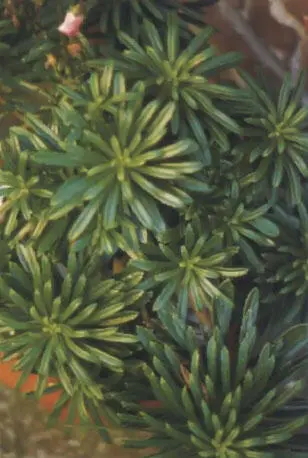
ABOVE
Plants such as Azorina vidalii can stay glossy and healthy-looking if fed and watered correctly.
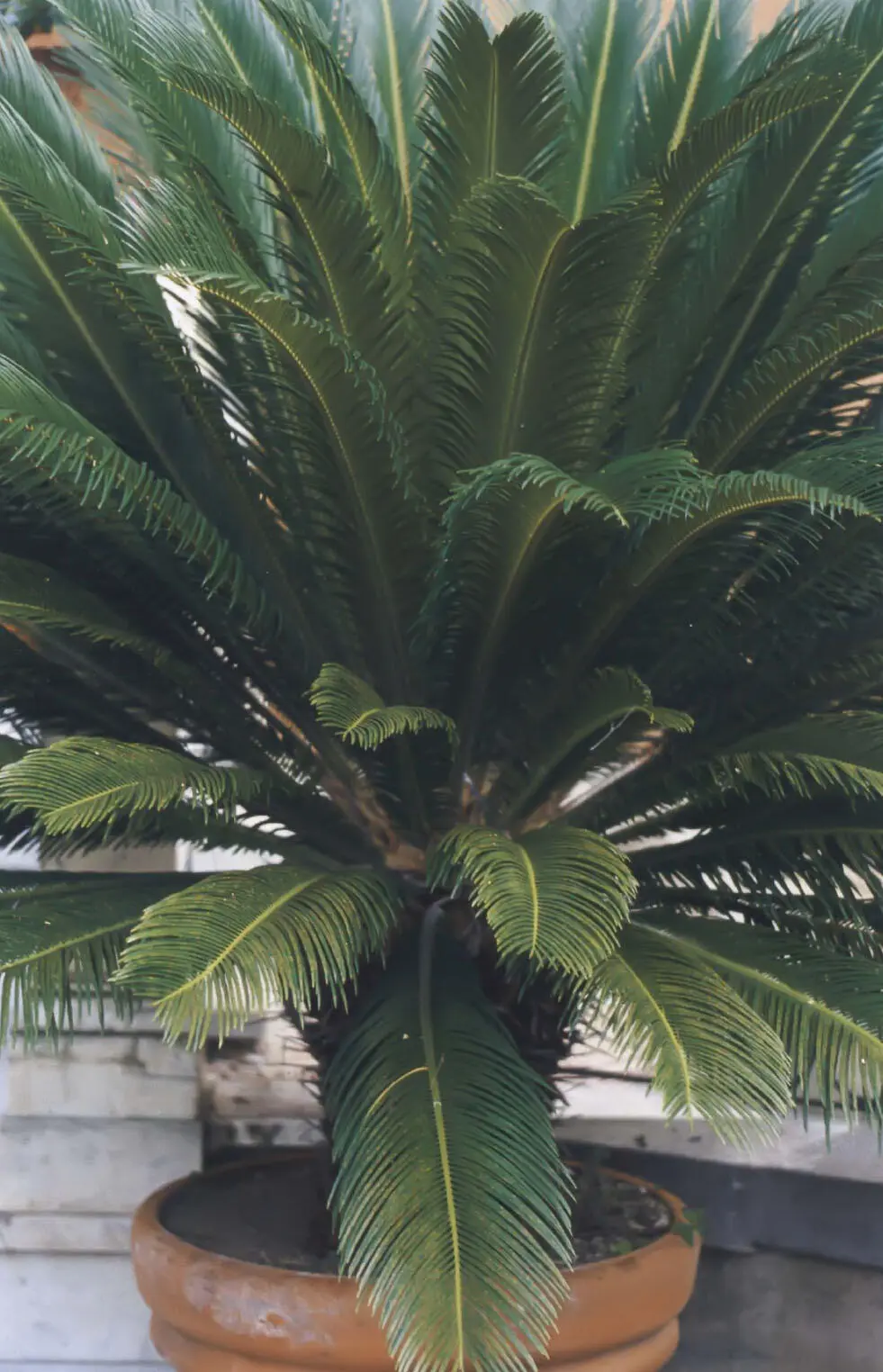
ABOVE
With regular irrigation, Cycas revoluta can look fantastic in a pot.
Pests & diseases in pots
Plants in pots are much more prone to attacks from various beasts and general disorders than plants in the ground. Keep a constant watchful eye and catch them at the first sign. (See the chapter on pests, diseases and other disorders on pages 334–347.) One particularly nasty horror is the dreaded vine weevil. This sneaky, vicious brute lurks under the soil feeding on the roots of your precious specimens. One day, your plant collapses with no warning and the top comes off in your hand – no roots left at all! By scraping around under the soil, large fat white grubs can be found (they’re large and fat because they have been gorging on the entire root system). Other signs to watch out for are nibbled notched leaves, which are made by the adult form of this nocturnal creature.
Once found, dispose of the entire contents of the pot, fill it with fresh compost and start again. There are some exceptionally nasty chemicals around that can be added to the soil to ward off vine weevil, but using a loam-based compost and giving an occasional dose of a natural predator (a nematode worm that eats only the bad guys) works very well. Vine weevils are lazy things and prefer to burrow through soft, peaty compost rather than heavier loam.

ABOVE
Echeveria glauca is a favourite snack for vine weevils.
Overwintering
No plant will stand having its roots frozen solid for weeks at a time. If you have a nice little courtyard garden in a warm inner city or if you live in a mild area near the sea, then this won’t be a problem. In colder areas, pots may have to be moved indoors or wrapped up. Choosing very hardy plants is obviously sensible, but the roots would still remain vulnerable. If cold winters are a regular occurrence in your part of the world, before planting, line the inside of each pot (excluding the bottom) with a thick layer of bubble wrap. This is completely invisible once the pot is planted up and much more pleasing to the eye than an old blanket wrapped around the outside of the pot.
Moving a heavy pot that has been planted up to less cold conditions indoors can be rather a nuisance. There are various trolleys and sack barrows on the market, but the best one I’ve come across has a beautifully angled shape and heavy-duty pneumatic tyres, which make light work of the whole procedure.
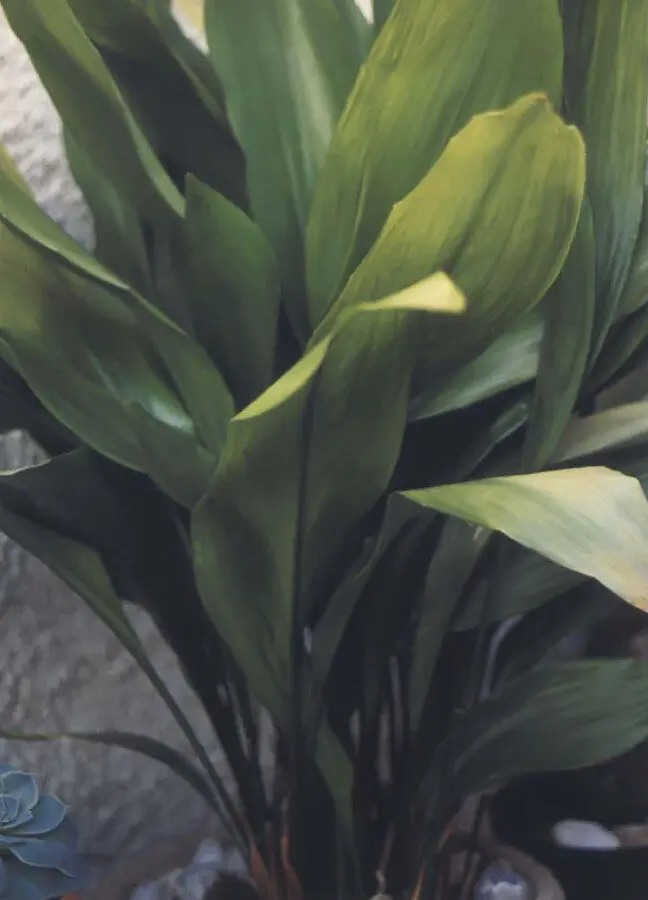
ABOVE
Canna indica can easily be overwintered under glass if it is planted in a container.
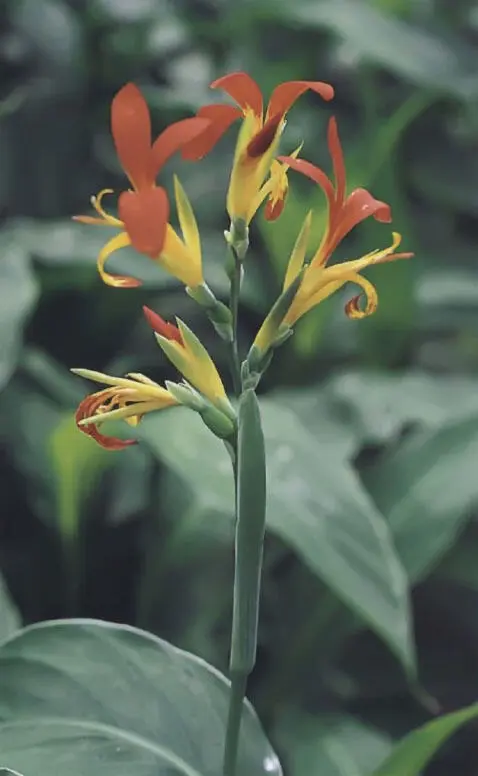
ABOVE
Aspidistra elatior is a nice leafy choice for a pot.
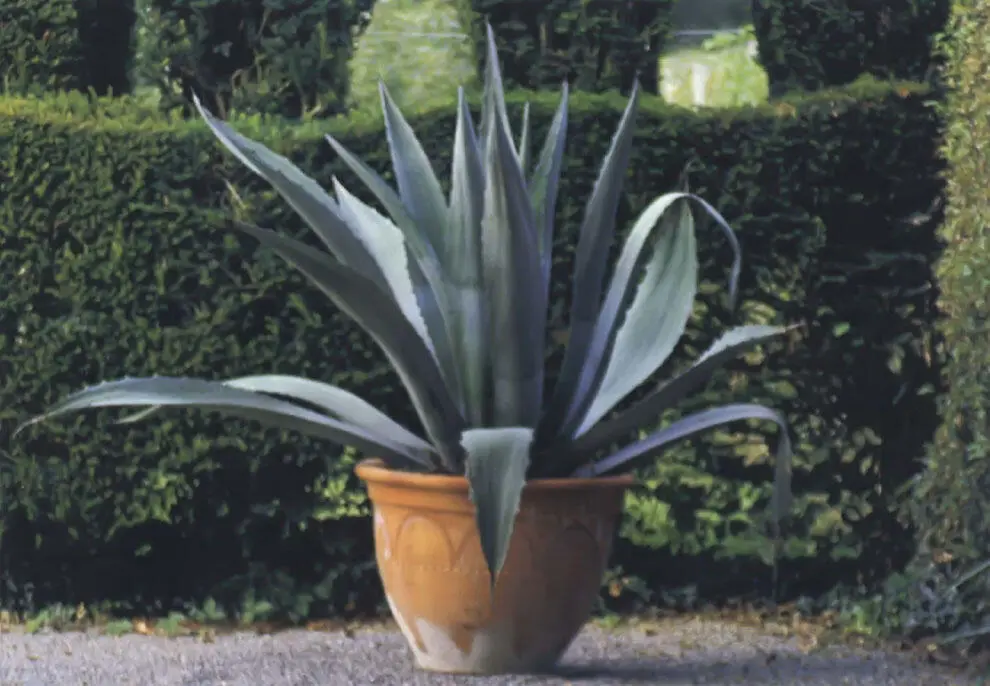
ABOVE
The blue form of Agave americana looks beautiful next to the colour of terracotta.
Conservatories
Conservatories have never been more popular. Having a garden room attached to the house, where one can wander into a different climate and enjoy all the leafy and floral delights that are too tender for outdoors, is a splendid idea. The image often includes reclining in comfy chairs and occasionally reaching out languidly to pick a home-grown juicy citrus fruit or maybe a ripe fig. A place where the last rays of the setting sun can be observed at the end of the day …
If only reality could match the dream. Nothing prepares conservatory owners for the difficulties of growing plants in this kind of environment. The glossy adverts are taken at face value, and the fact that there are myriad problems to overcome can be a bit of a shock. The previous pages dealt with growing plants in pots, but growing plants in pots and under glass takes the art of cultivation into a new league altogether. Plants hate the excessive heat, dry atmosphere, lack of ventilation and the extreme variations of seasonal temperatures often found in conservatories.
The better the environment in the conservatory, the larger the range of plants that can be grown successfully.
Choosing a conservatory
Buy the largest conservatory that you can accommodate and afford. The larger the space, the easier it is to maintain a balanced climate. Instead of automatically siting a conservatory on the sunniest side of the house, consider a shadier spot where the heat of the summer is less intense. If possible, choose a structure with a door at each end. This will allow a good flow of air during the summer to help keep the interior cooler. Gentle breezes are what we are aiming for, not howling gales, so a sheltered part of the garden is required, not an exposed corner.
Ventilation is a boring, but essential, subject to think about as well. It is almost impossible to have too much ventilation, especially in the summer. Most conservatories are not well designed in this department, offering just one or two feebly inadequate vents in the roof, if you’re lucky. It is worth paying extra to have as many fixed panes of glass in the roof as possible converted into movable ones that open. If the design allows, have some side vents fitted as well, to catch the breeze from all directions.
Flooring
As all plants are much happier growing in the ground than they are in containers, leaving some space in the conservatory floor, where small trees and faster-growing plants can be planted directly into the soil, is something worth thinking about when you are planning your conservatory. The roots would have the benefit of being able to spread out naturally, while the glass overhead would protect tender foliage from the frost.
Читать дальше


















